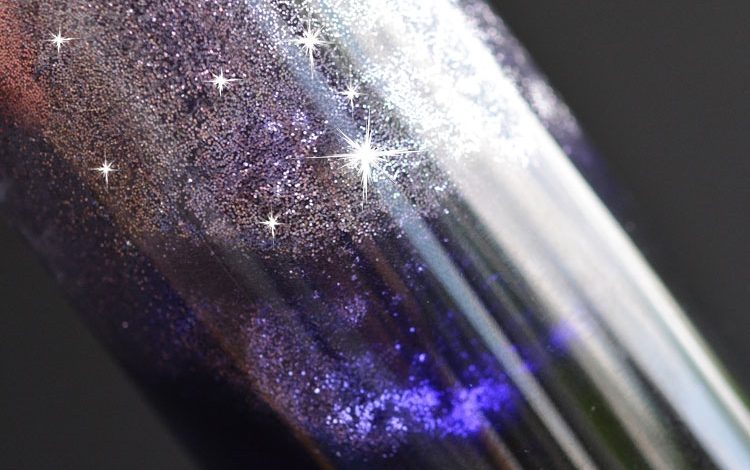What happens to craft glitter in a zero-gravity environment?

What happens to craft glitter in a zero-gravity environment?
Space is a pretty great place when you think about it. You’re up in the air, free from the bonds of Earth’s gravity. What does that mean for craft glitter? We sent some up to find out!
As you know, space is a pretty great place. You’re up in the air, free from the bonds of Earth’s gravity. That means things float around in a way that they don’t down here on Earth. What does that mean for craft glitter? We sent some up to find out!
It turns out, craft glitter behaves very differently in a zero-gravity environment! Without any gravitational force to hold them down, the particles of glitter floated around freely, forming weird and wonderful patterns. In this episode of SciShow Space, we’re going to take a look at what happens to craft glitter in a zero-gravity environment and see just how this strange behavior comes about.
Is there glitter environmentally friendly?
What happens to craft glitter in a zero-gravity environment? We don’t know for sure, but we have some ideas. In this blog post, we’ll take a look at what might happen to craft glitter in a zero-gravity environment, and we’ll also discuss some of the scientific principles behind it. We know that craft glitter is made of glass, and we know that glass is a common compound in the earth’s atmosphere. We also know that the way glass breaks down is that it breaks into smaller and smaller particles.
The problem is, when things float around in zero gravity, they don’t have any force that’s holding them down.
So, it’s possible that in zero gravity, the glass breaks up into even smaller particles. This would lead to a lot of glitter that’s actually much smaller, and much more fragile, than you might expect. It’s also possible that dust particles could float around in the zero-gravity environment. These particles would be pretty fragile, but they would still be bigger than craft glitter.
That could also explain the weird patterns that we see in zero gravity, because they could be the result of a bunch of smaller particles, floating around, interacting with each other.
The other thing is, this would be a really, really bad thing for craft glitter. Because craft glitter is so fragile, the smallest particle of dirt could easily damage it. We know that craft glitter is made from glass, but we don’t know exactly what kind of glass. We don’t know what its surface composition is, or whether it has any specific properties.
So, we don’t know whether it would be more or less likely to break apart in zero gravity. We also don’t know whether it would be more or less likely to break up into smaller pieces.
We don’t know whether it would be more or less likely to attract other particles of glass in a zero-gravity environment.
How long does glitter take to decompose?
When it comes to glitter, there are a lot of unanswered questions. How does it make your skin feel? Is it bad for the environment? How long does it take to decompose?
In this blog post, we’ll answer the question of how long it takes glitter to decompose. We’ll also look at some of the reasons why glitter is so harmful to the environment and what we can do to reduce its impact. We know that the glass particles of craft glitter can be pretty damaging to the environment, but we’ve also seen that some plastics and metals can be pretty harmful too.
In this blog post, we’ll look at the science behind the decomposition of glitter. We’ll look at how it breaks down, what the different components are, and what happens when it does break down.
You probably know that glitter is made of glass. But you might not know that the way glass breaks down is that it breaks into smaller and smaller particles. We know that the glass particles of craft glitter are really dangerous, but we don’t know exactly what kind of glass they are.
How do you make eco glitter?
If you’ve ever wondered how long it takes for glitter to decompose, you’re not alone. This question has been puzzling people for years, and there’s still no clear answer. Some say that it takes centuries for glitter to decompose, while others claim that it can biodegrade in a matter of months. So, what’s the truth?
It turns out that there is no one answer to this question. The rate at which glitter biodegrades depends on a number of factors, including the type of glitter, the climate, and the surrounding environment. In some cases, it can take centuries for glitter to decompose, while in others it can biodegrade in a matter of months. The reason that this question is so hard to answer is that it’s very dependent on the type of glitter that you’re talking about.
In this blog post, we’ll look at how glitter biodegrades. We’ll look at what determines how long it takes for glitter to decompose, and we’ll also look at what happens when it does break down.
So, in this episode of SciShow Space, we’re going to take a look at what happens to craft glitter in a zero-gravity environment and see just how this strange behavior comes about. SciShow Space is supported by the Gordon and Betty Moore Foundation.
Why is glitter biodegradable?
We all know that glitter is pretty but what you might not know is that it’s also biodegradable. In this blog post, we’re going to take a closer look at what biodegradability means and why glitter is a good example of it.
What Does Biodegradability Mean?
Biodegradability is the ability of a material to decompose into simple, environmentally friendly components within a reasonable amount of time.
Why Is Glitter Biodegradable?
Glitter is made of tiny plastic particles which are coated in a metallic finish. This makes the glitter reflective and sparkly. The plastic coating is what makes the glitter biodegradable.
When the glitter is exposed to the environment, the plastic coating gradually breaks down and the tiny plastic particles are released. When the tiny plastic particles break down, they break into smaller and smaller pieces.
The smaller the plastic particles, the more energy is needed to break them down. It takes more energy to break down tiny plastic particles than it does to break down bigger particles. So, the smaller the plastic particles, the longer it takes for the glitter to break down.
We know that plastic is made of a variety of different chemicals and that’s why glitter can be biodegradable in some cases.



